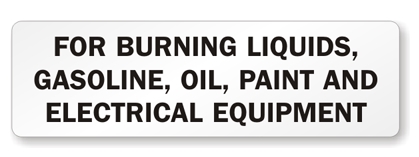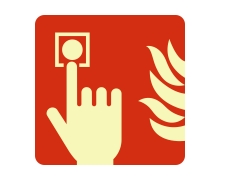FREE Fire Safety in Workplace Questions and Answers
Which fire extinguisher would you label with this information?

It is clear from the label "For Burning Liquids, Gasoline, Oil, Paint and Electrical Equipment" that Class B and Class C flames are involved. Class C fires include electrical equipment, while Class B fires involve flammable liquids including paint, gasoline, and oil.
Fire extinguishers that use carbon dioxide (CO₂) work well on Class B and Class C fires..
There should be portable fire extinguishers in every workplace.
Employers are not required by OSHA to supply portable fire extinguishers in the workplace. If they do, however, they have to put in place an instructional program to familiarize staff members with the fundamentals of using fire extinguishers.
Only personnel with the necessary training should use a portable fire extinguisher.
Workers have the option to permit some or all of their colleagues to use portable extinguishers. In both situations, workers should give staff members enough training to enable them to do so.
Fire alarms need to be examined.
A minimum of one monthly inspection is necessary to guarantee the effective operation and dependability of fire alarms.
What does the notice below indicate about fire safety?

How far must workers have to walk to get to a Class A portable fire extinguisher?
It is generally advised that personnel walk no more than 75 feet (22.9 meters) to access a Class A portable fire extinguisher.
Workplaces must abide by local fire safety rules and regulations, which can change. A safer working environment can be achieved by regular training on fire safety protocols and the correct use of fire extinguishers.
Should you be unable to leave your floor, you ought not should
If you are unable to escape a floor, it is not a recommended safety precaution to stand atop a chair and breathe the air above. It's crucial to adhere to established evacuation protocols in the event of an emergency, which may involve using stairwells or designated evacuation routes. It's imperative that you follow any special rules or protocols that may exist at work in order to protect yourself. Speak with the appropriate authorities or your workplace safety officer if you have any questions concerning emergency protocols.